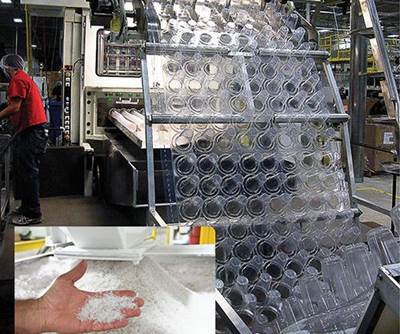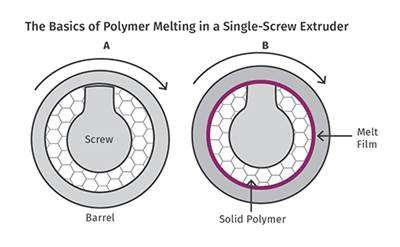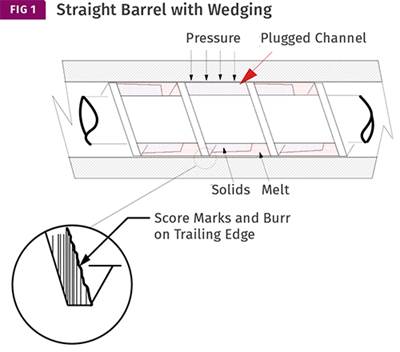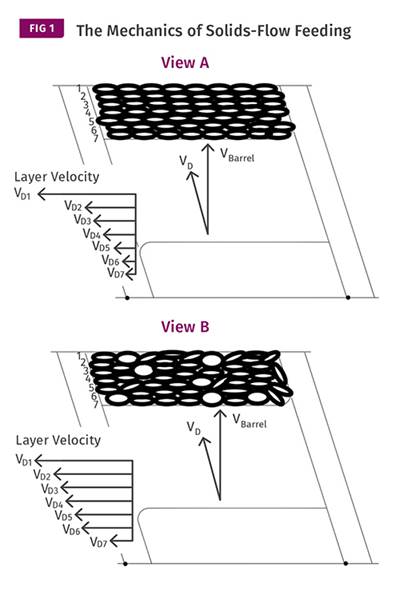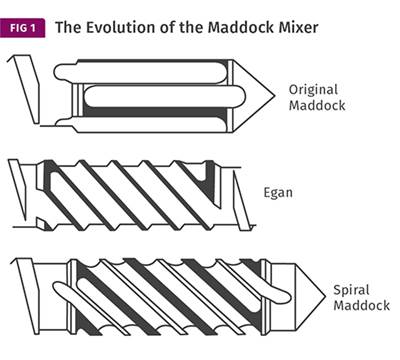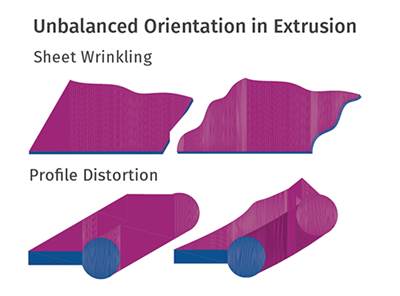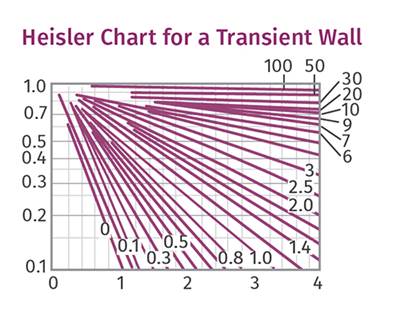Extrusion Know How
EXTRUSION: Venerable Maddock Mixer Still an Extrusion Workhorse
Variations to this decades-old mixing section are widely used, but processors should carefully analyze these designs and not assume they will perform better.
Read MoreEXTRUSION: Managing Regrind
Reusing scrap is a necessary evil. But be aware of the negative impact scrap has on properties and extrusion efficiencies. Start by developing a regrind-usage program.
Read MoreEXTRUSION: Melting 101
Learn the basics on how polymer melts in a single screw. Barrel temperature plays less of a role than you might think.
Read MoreEXTRUSION: The Two Main Causes of Screw Wear
Wedging and misalignment are often confused with each other when inspecting a worn screw.
Read MoreEXTRUSION: Pellet Geometry Can Impact Output
A simple angle-of-repose experiment can help you determine how your pellets will feed.
Read MoreEXTRUSION: Barrier Screws and Mixers
For some reason, there are a lot of barrier screws in operation with high-shear mixers, when a distributive mixer is usually a better choice.
Read MoreExtrusion: How to Adjust for Polymer Shrinkage and Orientation
Polymers shrink and orient. Sometimes orientation is unbalanced, resulting in misshaped parts. But there are steps beyond tweaking the die that can mitigate these effects.
Read MoreEXTRUSION: Another Technique for Controlling Melt Temperature
Flight widths are almost always designed at 10% of the screw diameter. But they can be optimized to reduce melt temperature and perhaps boost output.
Read MoreEXTRUSION: Cooling: The Critical Function in Extrusion
Figuring out how much cooling your process needs is complicated. But there are ways to approximate.
Read MoreEXTRUSION: Here’s Why You Shouldn’t Run Your Extruders Dry
At least not for longer than a few minutes. The thin film that’s captured between the screw flights and barrel wall supports the screw and acts as a lubricant. Without it, galling can occur.
Read More
